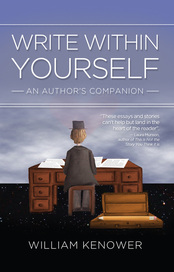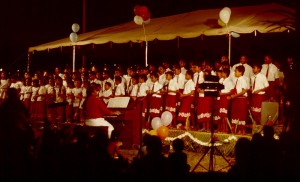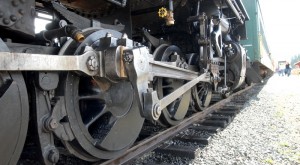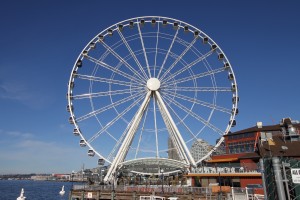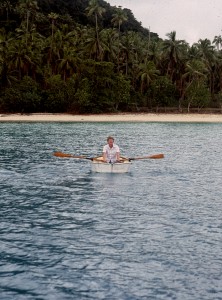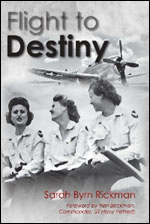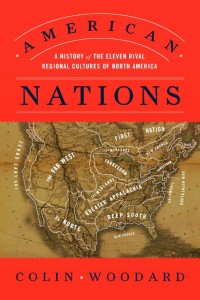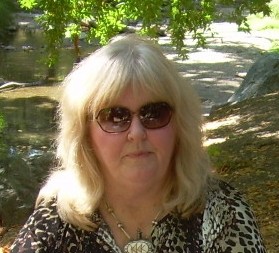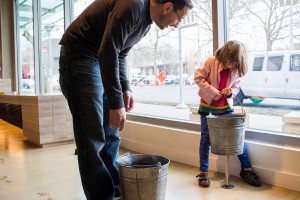
Photo by Michael Hanson
The late football coach Vince Lombardi said, “The measure of who we are is what we do with what we have.” A highly inspirational example of this is right here in Seattle, the Bill & Melinda Gates Foundation. Launched in 2000 by the Gates family, the foundation is co-chaired by Bill and Melinda Gates and Bill’s father, Bill Gates, Sr. As of November, 2014 the Gates endowment in U.S. dollars was $42.3 billion.
The Foundation is said to be the largest private foundation in the world and is driven by the interests and passions of the Gates family. Throughout the facility are thought-provoking quotes such as this from Melinda Gates: “If you can really believe that all 7 billion people on the planet are equal to you in spirit, then you will take action to make the world more equal for everyone.”
When you step into the large facility on Fifth Avenue North, you are greeted by a staff member. Visitors are free to wander at will, but we opted to be accompanied by a staff member for more detailed explanations of this complex philanthropic organization.
Each of the large rooms has unique displays that graphically describe the foundation’s goals and accomplishments. Beyond the reception area, the “Voices” room allows visitors to hear voices from around the world and to see portraits of the foundation family—employees, grantees, partners, beneficiaries, and co-chairs.
Moving on to the “Family & Foundation” section, we learned why and how the Gates family started the organization. Examples display methods used to work around the world.
In the “Partnerships” section, displays show how their partners are making progress on tough problems globally and locally. A note about the Gates Foundation’s “partners”: The Foundation doesn’t itself give money to causes, but rather donates funds to various partner organizations through grants, thus allowing far greater dimension to its recipients. On that same note, since the Foundation doesn’t solicit donations, visitors are encouraged to donate to causes that interest them.
The “Theater” features continuing short films about the large variety of projects, ranging from clips of Bill and Melinda to African scenes to agriculture projects in India to school children in the United States. Visitors come and go as they please, viewing as many clips as they desire.
Visitors are invited to solve real-world problems in the”Innovation & Inspiration” room. Computers and other tools are provided to give food for thought and promote ideas.
Connecting these various rooms is a long hallway with a child’s footprints imprinted on the floor. Those footprints demonstrate the distance people, most often women and children, have to carry water from the water’s source to their home, which could be a distance of three miles. Pails are loaded with the approximate weight of water. Visuals such as this drive home the desperate need many countries have for basics that we so often take for granted, such as clean water, sanitation, vaccines, and education.
The Gates Foundation works with partner organizations worldwide to tackle four program areas:
— Global Development Division works to help alleviate the poor from hunger and poverty. The partner organizations help identify and support innovative approaches to reach people’s basic needs for food, healthcare and education.
— Global Health Division helps to advance science and technology by delivering tools for basic health programs, such as vaccines, drugs and diagnostics, plus discover new solutions for on-going health needs such as clean water and sanitation.
— U.S. Program Division’s primary focus is that all students graduate from high school prepared for college. They also address issues of social inequity and poverty in Washington State, where the foundation makes its permanent home.
— Global Policy & Advocacy Division is dedicated to advancing the goals the foundation works to achieve through policy analysis, accountability, and strengthening government relations. Besides the Seattle headquarters, the foundation has a European and Middle East office in London, and offices in China, India, Ethiopia, Nigeria. and South Africa.
Every person deserves the chance to live a healthy, productive life. The Bill & Melinda Gates Foundation is actively doing something about that. If you’re in the Seattle area, take time to visit this impressive visitor center. There is no admission fee. The center is open Tuesday through Sunday, 10:00 a.m. – 6:00 p.m.. For more information visit their website: www.gatesfoundation.org or call (206) 709-3100,



